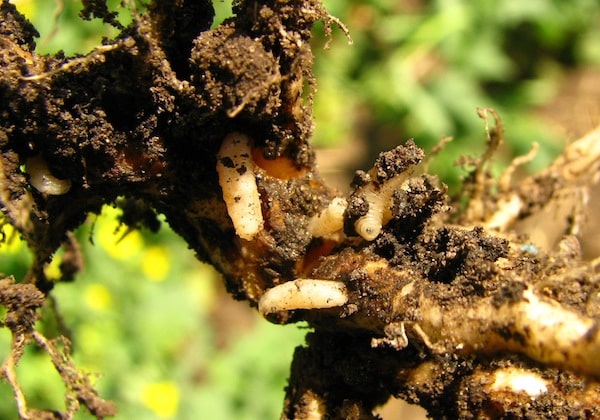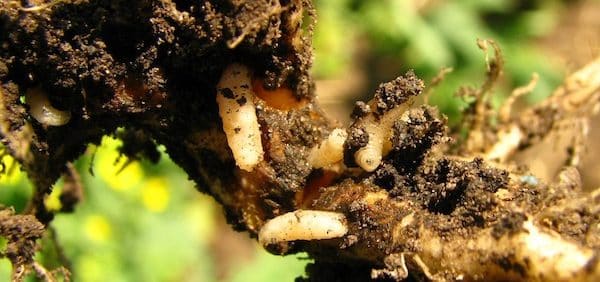
Lots of insects are being reported, but agronomists and growers are generally doing a good job of assessing the economic threat and determining that most situations this week do not require a spray. Given the patchy nature of most insect patterns, all fields should be checked. If something is spotted that may be above thresholds, check a few areas of the field before making the final decision.
Lygus timing and thresholds. Lygus have the greatest economic threat when numbers are above threshold and are feeding on pods. No economic threshold has been set for spraying while the crop is still in the flowering stage, given that canola can usually compensate for this by setting more flowers. Recent work confirms that a fairly large population of lygus has almost no effect on yield in canola with good yield potential and ample moisture, but that same population can cause significant yield loss in a stand with moisture stress and low yield potential. When counting lygus in sweep nets, include late instar nymphs, the ones with the black dots on their backs and black wingpads visible. If you are seeing a lot of earlier nymphs, check again every few days. Earlier nymphs do no damage because they are unable to penetrate pods. In warm conditions, it may take only a week for lygus to grow from early to late instar stages. Lygus scouting, timing and thresholds.
Grasshoppers. Dry conditions tend to increase the grasshopper threat. The nominal threshold for grasshoppers in canola is 8-12 per square metre, although the higher end of that range may be more appropriate in a typical canola crop. Grasshoppers are often at higher numbers at field margins, making a targeted spray possible. Scout to see where that line is. In some cases, they will migrate across fields. How to count them.
Blister beetle. These do not usually need to be controlled in canola, and serve as a reminder that not everything we see will cause economic loss. Blister beetles have large mandibles capable of mowing off canola blossoms fairly quickly, but the feeding is patchy with damage confined to smaller areas — a few acres — rather than whole fields. It may be economical to spray out the patch of high numbers while leaving the rest of the field alone, but nothing is registered for control of blister beetles in canola. Also note that blister beetles may be doing more benefit than harm. The larvae eat grasshopper eggs. More on blister beetles. Note: The name blister beetle is appropriate because some people are very sensitive to compounds that the beetle produces.
Cabbage seedpod weevil. A large percentage of canola fields in southern Alberta and southwest Saskatchewan were sprayed at early flowering for cabbage seedpod weevil. The spray timing is 15-20% bloom and the threshold is 20 per 10 sweeps. Some fields are still at or entering this window. Spraying much after this window will have limited benefit and could bring unnecessary harm to pollinators. More scouting tips.
Finding more root maggot than usual? This video may be of interest:
For more information on these and other insects active this time of year, see the Prairie Pest Monitoring Network’s canola scouting chart.
